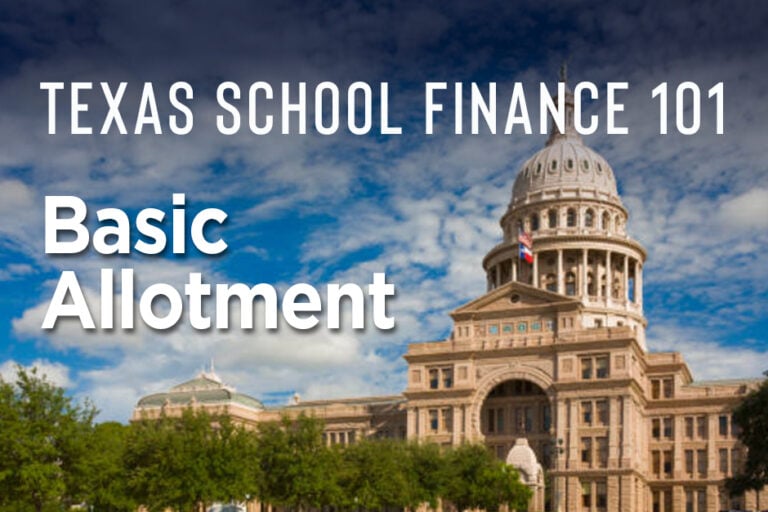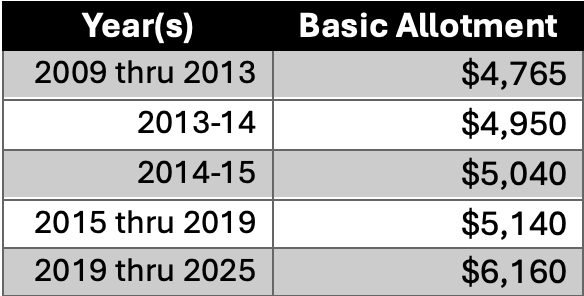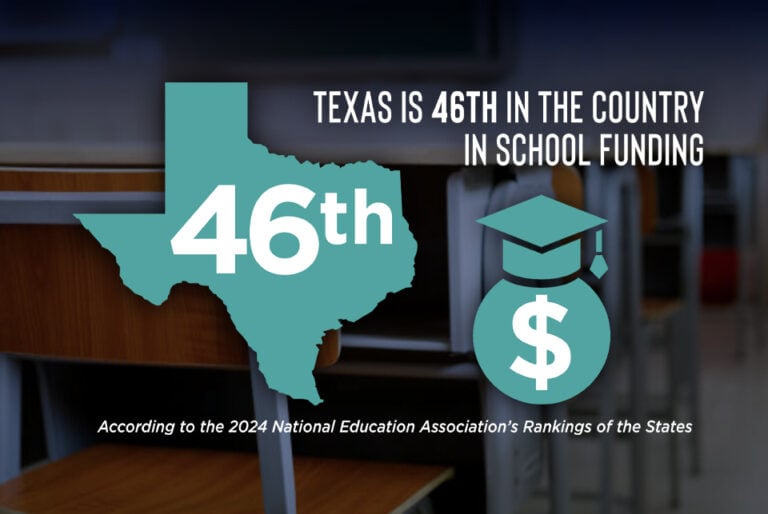
The article below is the fourth in a series designed to give readers insight into the school finance system in Texas. School finance is complicated. But it matters because it affects everything: student learning, teacher pay, school facilities, security, school buses, computers, career and technical opportunities, internet access, sports, fine arts and on and on and on. Ultimately, it affects the future of Texas.
Each article in the series will bite off a small piece of school finance and attempt to give readers a basic understanding of the system in Texas and Arlington ISD. Check back each Wednesday for a new article.
Current Basic Allotment set in 2019
The second article in this series talked about where school districts get their money and how the state of Texas determines the amount of revenue a school district is entitled to receive for a year. But where does that entitlement number come from? How does the state decide how much money a school district is entitled to receive?
You’ve heard this before, but the answer is complicated. Here’s how it basically works though.
School funding starts with the basic allotment.
The basic allotment is the amount of money the state says a school district is guaranteed to receive for each student.
[Keep in mind, school districts receive an allotment for students based on attendance – not enrollment. More on that next week.]
The current basic allotment was set by House Bill 3 (HB 3) in 2019 at $6,160 per student. (You might remember that we mentioned HB 3 in the first article of this series.)  The basic allotment has remained the same since and is still at $6,160. There has been no adjustment for inflation since 2019. There have been other spans of consecutive legislative sessions as well where the basic allotment was not increased as seen in the table.
The basic allotment has remained the same since and is still at $6,160. There has been no adjustment for inflation since 2019. There have been other spans of consecutive legislative sessions as well where the basic allotment was not increased as seen in the table.
The basic allotment is the starting point. There is additional funding given for certain student characteristics. For example, there is a small additional allotment for students in approved career and technical education classes. Another example is additional funding for English-language learners and students in dual language programs. Special education students also garner a higher allotment.
Other Allotments
There are also other allotments spelled out by the state that can add to the total entitlement a district can receive. Among these are allotments for transportation – for students who live more than two miles from their campus – for technology and instructional materials and for school safety. 
There are several allotments based on district characteristics as well. For example, there is money given for small and mid-size districts and for fast-growth districts. Arlington ISD does not qualify for any of those.
Add it all up
Add up all the allotments and you get your entitlement number. It all makes for a rather complicated process. Remember that 78-page document, “The Summary of Finances,” we mentioned in the first article in this series? That’s the document where all the student data is collected and applied to the various allotment formulas to determine the district’s entitlement.
As mentioned earlier, the allotments are based on student attendance – not enrollment. We’ll get into attendance-based funding next week.
